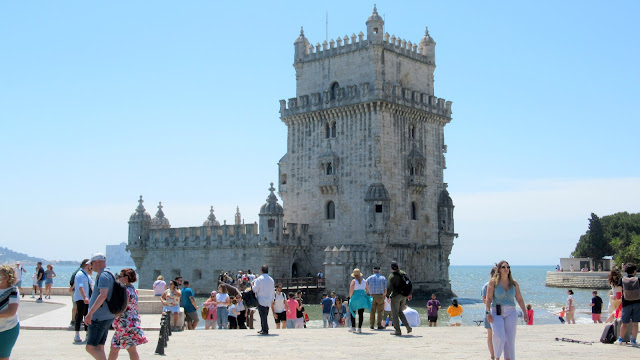Torre de Belem.
The Tower of Belem was built between 1514 and 1519, at the initiative of King Manuel I, to defend the entrance to the river Tagus estuary and to provide protection for the Mosteiro dos Jeronimos, the monastery, which was also being built at that time.
When it opened in 1520, the tower would have been near the centre of the river - the earthquake of 1755 shifted the river's course.
Francisco de Arruda, the architect, combined two architectural models: the tall tower, in the style of a medieval keep; and the bastion, or casemate, which was a modern military device. At the time, the old neuroballistic warfare, which involved the hurling of projectiles and was made possible by the tall, recessed tower, was gradually being replaced by pyroballistic warfare, involving the use of heavy artillery and firearms, made possible by the bastion.
Besides its unique structure, the building is heavily laden with festive decorations that were typical of the Portuguese Late-Gothic 'Manueline' style, clearly confirming that the tower was built in the reign of King Manuel. The obsessive presence of royal heraldic symbols was combined with a wide range of ornamental motifs, such as ropes, knots and animals, as well as a number of Moorish elements.
the cannons are still here
on to a large balcony, known as a loggia, which was used for court occasions celebrated with great pomp and ceremony, which would certainly have intensified at those times when vessels were to be seen arriving and leaving the port.
The drawbridge, combined with portcullis and several openings on the entrance ceiling which through projectiles were launched, made access by invaders difficult
Good views from here, including of this modernist building which is, we later found out on our way to Cascais, a hospital for prostate cancer
















No comments:
Post a Comment